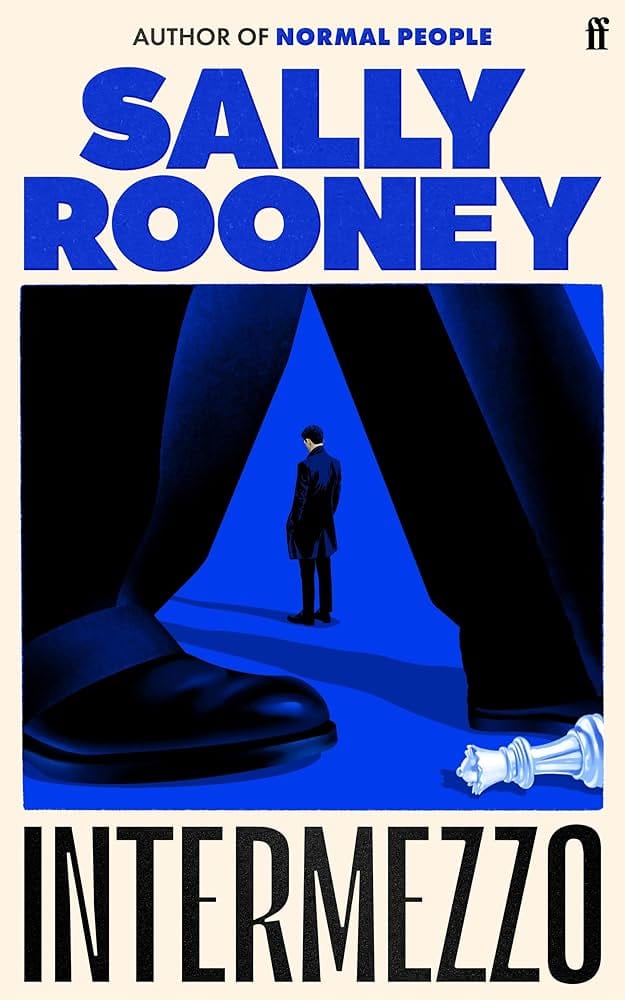‘Rooney’s writing about love hits as hard as it does because she is especially adept at evoking loneliness, for which love is salve. There is so much restraint and melancholy profundity in her prose that when she allows the flood gates to open, the parched reader is willing to be swept out to sea,‘ says Dwight Garner, New York Times book critic, and there is perhaps barely a comment that can so perfectly capture the sentiment she attempts to cover in her books.
Intermezzo is the latest book by the Irish bestselling author Sally Rooney and also several people’s most anticipated novel of the year.
Intermezzo is the latest book by the Irish bestselling author Sally Rooney and also several people’s most anticipated novel of the year. The story revolves around Peter and Ivan, aged 32 and 22 grieving the loss of their father. Age tends to play an important role in the book, perhaps suggesting that ‘the human condition‘ is universal all throughout and drawing to light the omnipresence of love and loss. Much like in her previous books, Rooney melds in the life of those involved with the main characters to paint an intricate picture, and also drawing to the note of the reader that the troubles of those we love are likely to scathe our hearts.
Peter is a 32 year old lawyer, fighting for radical human rights, rich, his life from a third person perspective seems blissfully ideal, but we see him struggling with what can only be described as a heavy dependence on alcohol and drugs seeping through existence as he comes to terms with loving two people: Sylvia his ex- girlfriend from college who has been through a tragic accident and Naomi, a 23 year old in college struggling to make ends meet.
Ivan, on the other hand is 22 years old, fresh out of college, a competitive chess player awkward with his own existence and unable to fathom the beauty of mutual affection until he meets 36 year old Margaret.
Love as a human condition in Rooney’s Intermezzo
Interestingly though, we don’t see a play on the age factor. There is no fetishisation of any of the characters, and as we would in a sappy romance novel, we don’t see Sylvia and Naomia pitted against each other in a heated face – off. The characters are all fully fleshed out.
On the chess board of their lives, the characters imagine the moves they could have made. Rooney explores her trademark themes: power dynamics in relationships, an uncomfortable dissection of emotions, the guilt that comes with hoarding too much money and the obligatory love we feel towards our families.
Despite the interweb of love and emotional dependency, the book is primarily written from two perspectives- those of Peter and Ivan. Whilst Peters’ segments in the novels are unspooled and raw, much like the status of his mind- simply the ebb and flow of words, the seeming urgency of thought, the frantic frenzy, Ivan’s is different.
Whilst Peters’ segments in the novels are unspooled and raw, much like the status of his mind- simply the ebb and flow of words, the seeming urgency of thought, the frantic frenzy, Ivan’s is different.
Ivan’s sections are laid out much more neatly with points and counterpoints following through their dialogue, seemingly reflecting his consciousness and way of approaching the world, in a strategic Chess like technique, mulling over his thoughts.
Peter’s relationships with Sylvia and Naomi both simultaneously teeter towards explosion and exist as a contrast. He is content with the notion of loving Sylvia, it almost seems convenient. Rooney writes movingly of their past relationship, their literary conversations, and Peter’s persistent feelings.
However there are some flaws in the novel. It seems to be philosophically ambitious, but leaves too many loose ends, leading to the reader struggling to grasp for clarity, it propels the reader to think, but merely ends up being cyclical in a way that seems unintentional.
What a reader can expect from Rooney is a change of form in her writing- Conversations With Friends and Normal People use simple direct prose, whilst Beautiful World Where Are You takes the form of an epistolary book. In her latest, she seems to be inspired by Joyce and Woolf, adopting the stream-of-consciousness manner, and while it works especially well in Peters’ segments (it almost feels as though the reader lives in his mind), the books’ pacing seems wrong- slow overall and then wrapped up too quickly.
On the brighter side though, Rooney doesn’t hesitate to write about sex and it is no small achievement that she does it with both tact and tenderness, describing moments that are often hard to dissect, that only someone with high emotional intelligence could do. Considering male writers (Bukowski, Miller and Flaubert), it is pleasing to read a woman do so. Stitched into the novel are excerpts from T.S. Elliot, John Keats, James Joyce and even Lana Del Rey.
In short, Intermezzo seems to come close to, but not fully realises the excerpts of abstract systems that govern peoples’ existence.
About the author(s)
Treya covers art, culture, climate and the environment. She has aspired to be a journalist ever since she was little. She has reported for The Hindu and Deccan Chronicle among others and explores how feminism takes root in everyday life by leading sessions with young people on gender, digital safety and the "good girl" syndrome.







